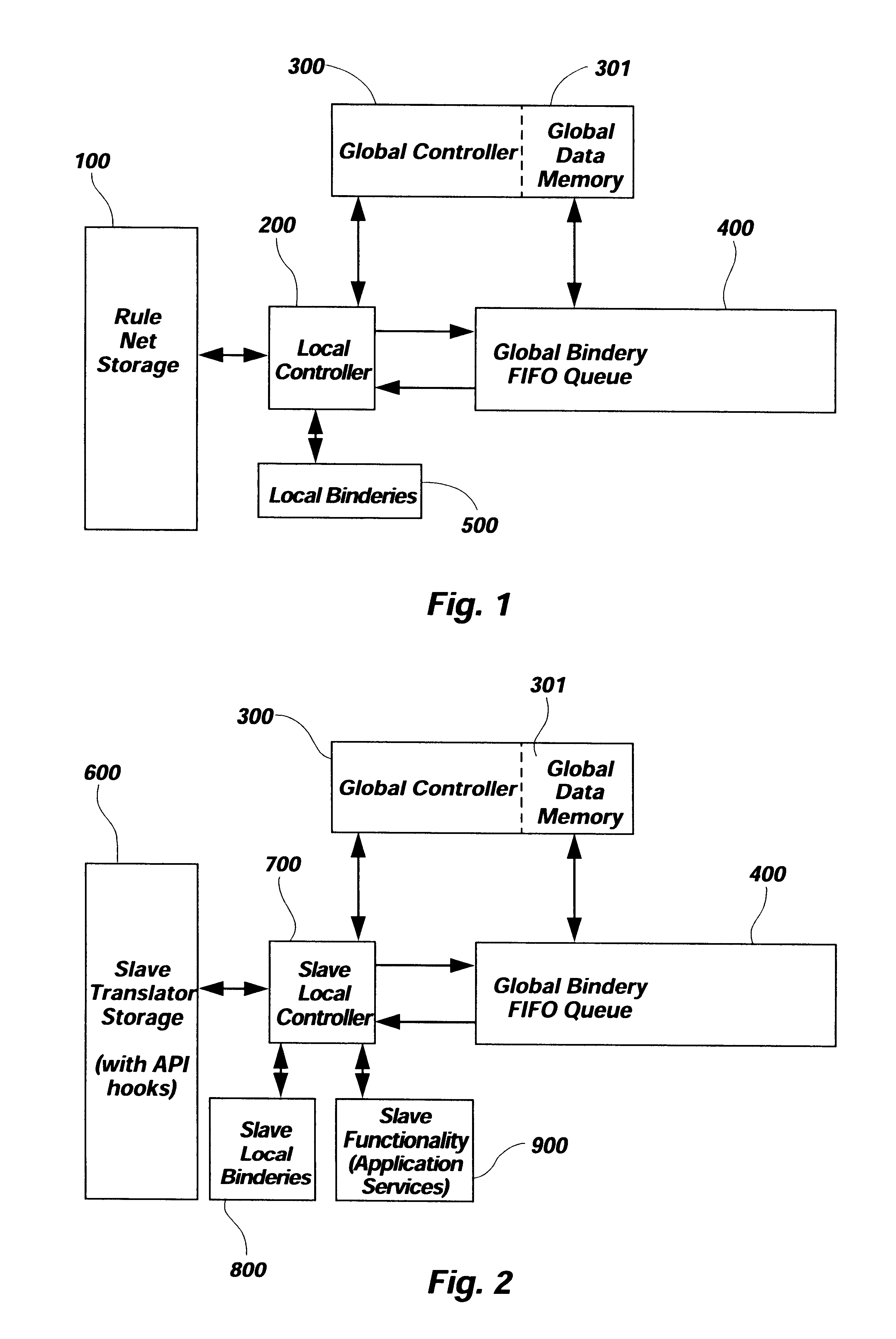Distributed digital rule processor for single system image on a clustered network and method
a technology of clustering network and system image, applied in computing models, multi-programming arrangements, instruments, etc., can solve problems such as software which is difficult to debug, von neumann processors are coming close to the limit of their capacity, and von neumann processors are sometimes unstable and can crash
- Summary
- Abstract
- Description
- Claims
- Application Information
AI Technical Summary
Benefits of technology
Problems solved by technology
Method used
Image
Examples
Embodiment Construction
The following examples are of rules in a rule net or broadcast rules. In the example rue instances, all of the numbers are in hexadecimal and use the data structure code directly following the example rules. Each instance has a byte stating total number of variables and the number of input variables. It should be noted that although the variable name and type are shown in the tables, the variable values and variable type are only stored as numerical representations in an order which is known to the local and global controllers and which are pre-defined in the compiler. Some of the defined variables and function calls are shown in the data structures following the example rules.
This instance shows 5 total variables and 2 input variables. This call does not have a TO_NODE input variable, so it is a broadcast style to find a recipient slave translator or rule net to use for all subsequent calls.
This is an example of a rule stored in the rule net. It has 6 total variables and 1 input va...
PUM
 Login to View More
Login to View More Abstract
Description
Claims
Application Information
 Login to View More
Login to View More - R&D
- Intellectual Property
- Life Sciences
- Materials
- Tech Scout
- Unparalleled Data Quality
- Higher Quality Content
- 60% Fewer Hallucinations
Browse by: Latest US Patents, China's latest patents, Technical Efficacy Thesaurus, Application Domain, Technology Topic, Popular Technical Reports.
© 2025 PatSnap. All rights reserved.Legal|Privacy policy|Modern Slavery Act Transparency Statement|Sitemap|About US| Contact US: help@patsnap.com



